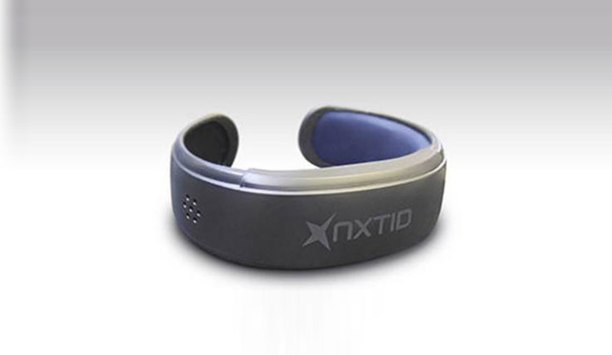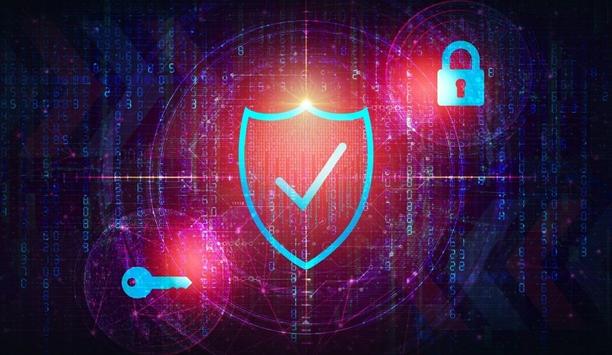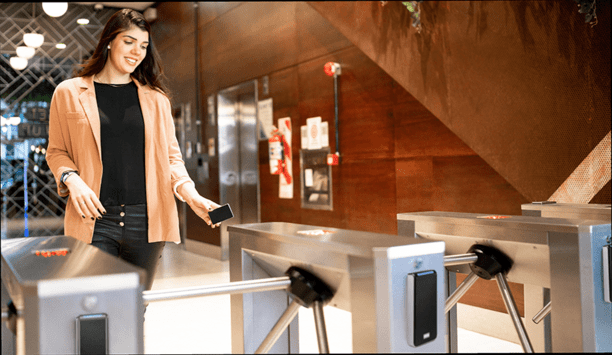NXT-ID - Experts & Thought Leaders
Latest NXT-ID news & announcements
NXT-ID's IoT Stamp module employs Nordic's nRF52832 SoC to deliver connectivity solution for space-constrained low power IoT applications Nordic Semiconductor announces that Melbourne, FL-based security technology company, NXT-ID, has selected Nordic's nRF52832 Bluetooth low energy System-on-Chip (SoC) to provide Bluetooth low energy and Near Field Communication (NFC) wireless connectivity for its 'IoT Stamp' module. The module is designed for integration into wearables, portable devices, and Internet of Things (IoT) applications. Drop-in solution The IoT Stamp is said to have the smallest footprint of any combined Bluetooth low energy and NFC module on the market, suitable for ultra-compact, low energy applications, for example smartcards or smartwatches. The module is designed as a 'drop-in' solution to help manufacturers with little or no RF engineering expertise reduce development time and speed time-to-market for connected products. The module supports a range of personalised services including identity management, multifactor biometric authentication, and payment methods including Bluetooth low energy, NFC, and dynamic magnetic stripe. With a 10mAh battery the IoT Stamp can last for several months prior to recharge, thanks to the ultra-low power operating characteristics of the nRF52832 SoC, as well as other low power techniques including motion activation, a low power touch control user interface, and patent pending ultra-low power 'buttonless' wake-up technology. "Nordic's technical support proved outstanding and the company's engineers were always very responsive" Nordic nRF52832 features Nordic's nRF52832 Bluetooth low energy SoC, a member of Nordic's sixth generation of ultra-low power (ULP) wireless connectivity solutions, has been engineered to minimise power consumption with features such as the 2.4GHz radio's 5.5mA peak RX/TX currents and a fully-automatic power management system that reduces power consumption by up to 80 percent compared with Nordic's nRF51 Series SoCs. The result is a Bluetooth low energy solution which offers 90 CoreMark/mA, up to twice as power efficient as competing devices. The nRF52832 SoC combines a 64MHz, 32-bit ARM Cortex M4F processor with a 2.4GHz multiprotocol radio (fully compatible with Bluetooth 4.2, ANT and proprietary 2.4GHz RF software) featuring -96dB RX sensitivity, with 512kB Flash memory, 64kB RAM, and an NFC-A tag for "Touch-to-Pair" operations. When launched, the SoC was the world's highest performance single-chip Bluetooth low energy solution, delivering up to 60 percent more generic processing power, offering 10 times the Floating Point performance, and twice the DSP performance compared to competing solutions. Bluetooth low energy solution "We selected Nordic's nRF52832 SoC because it provided us with both a Bluetooth low energy and NFC solution on a single chip, giving us a smaller footprint as well as the low power consumption we required," says David Tunnell, NXT-ID CTO and Executive VP. "Moreover, Nordic's technical support proved outstanding and the company's engineers were always very responsive." NXT-ID has already partnered with travel and lifestyle community membership vendor WorldVentures to develop the flye smartcard which will be one of the first applications of the nRF52832-powered NXT-ID IoT Stamp. The flye smartcard can be used by WorldVentures' 500,000 worldwide members for electronic payment, rewards, and other purposes. Users can load up to ten records-for example credit, debit, ID, and loyalty cards-on the 'all-in-one' smartcard.
The "IoT Stamp" is an intelligently connected electronics module that can fit within most devices NXT-ID, a security technology company, announces that, in cooperation with Nordic Semiconductor, ASA, the Company demonstrated a miniature module within a wearable smart band to enable devices powering the IoT (Internet of Things). The "IoT Stamp" is an intelligently connected electronics module that is small enough and low power enough to fit within most devices, even a smart card or a watch band. Key functionality includes patent pending ultra-low power "buttonless" wake-up, motion activation, and personalised services including identification services, multi-factor biometric authentication, and payment technologies including Near-Field Communications(NFC) and wireless magnetic stripe (Wi-Mag). Gino Pereira, Chief Executive Officer of NXT-ID stated, "The "IoT Stamp" enables a new class of "intelligently-connected" devices that only connect to the internet when required and utilises our patented dynamic pairing technology to secure communications between devices. We believe this is the first-time Bluetooth Low Energy (BLE) and NFC technologies have been integrated on the same chip which was supplied by Nordic. This module, once fully developed, will be made available for sale to manufacturers of products that require highly capable, miniature, low power electronics for communication and payments.”
FaceMatch uses advanced facial recognition algorithms to implement access control NXT-ID, Inc., a company focused on the growing mobile commerce announces that it has joined the Cisco Solution Partner Program as a Solution Partner.Cisco Solution Partner ProgramGino Pereira, Chief Executive Officer, said, "We are very excited about our collaboration with Cisco as a Solution Partner and see it as a milestone for our business strategy moving forward. Having access to the Cisco Partner Ecosystem will play an important role in growing our business. Through this program we intend to provide biometric and encryption solutions involving facial recognition and later on, voice recognition." According to Transparency Research, a next generation provider of syndicated research, the global video surveillance and video surveillance as a service (VSaaS) market is expanding at a CAGR of 17.0% from 2016 to 2024. By the end of 2024, it is expected to rise above US$88 billion, after being valued around US$21 billion in 2015. MobileBio FaceMatch facial recognition technology MobileBio FaceMatch is a modular facial recognition technology that can be provisioned to compliment a variety of video surveillance and VSaaS platforms including smartphones, tablets, laptops and desktop computers. Depending on the number of cameras available and level of security desired, FaceMatch uses advanced facial recognition algorithms to allow the user access to their device, data, or door. The technology can be hosted on the device or configured to access cloud computing for remote authentication via NXT-ID's BioCloud Authentication and Identity Management Services. The technology will also soon be available as an app on the iPhone and Android platforms. Delivering integrated solutions The Cisco Solution Partner Program, part of the Cisco Partner Ecosystem, unites Cisco with third-party independent hardware and software vendors to deliver integrated solutions to joint customers. As a Solution Partner, NXT-ID, Inc. offers a complementary product offering and has started to collaborate with Cisco to meet the needs of joint customers. Save
Insights & Opinions from thought leaders at NXT-ID
Consumer electronics are closely related to physical security. For one thing, electronics consumers increasingly see security as one of the functions they want their smart home systems to perform. We have heard the Internet of Things (IoT) buzzword in our market, and it is also a major force in the changing consumer electronics arena. Because consumer electronics are increasingly tied in with security, many in our industry keep a close eye on developments at the huge Consumer Electronics Show (CES) that kicks off every new year in Las Vegas. There are more security-related announcements than ever at CES, and the show sometimes offers a preview of what’s to come in the world of video. The video technologies our industry uses are generally introduced first in the consumer electronics field, and then are adapted to the more specialised video surveillance market. Over the years, the CES show has provided us the first glimpse of high-profile technologies such as 4K video, and the 2017 show (5-8 January) was no exception. Intelligent home automation systems One of the biggest names in security – ADT – made news at this year’s CES. The provider of automation solutions for homes and businesses welcomed the Amazon Echo and Echo Dot products into its ADT Pulse ecosystem. Homeowners will now be able to arm and disarm their home security system with simple voice commands and a security PIN. It’s just one example of how the “smart home” trend (and IoT) is evolving in lockstep with security. Alarm.com is also promoting a drone that can respond to events around a home or business, providing video from “flying cameras” Vivint, a home security company, announced its new “Sky” smart home assistant product that employs artificial intelligence and manages connected devices. More intelligence was a big emphasis at CES, also including Alarm.com’s “Insights Engine.” It uses intelligence to analyse (and “learn” from) behaviour and activity patterns of connected devices in the home. Alarm.com is also promoting a drone that can respond to events around a home or business, providing video from “flying cameras.” Video wallpapers and 4K ultra-rich screens Also at CES 2017, NXT-ID demonstrated a miniature module within a wearable smart band that combines Bluetooth Low Energy (BLE) and Near-Field Communication (NFC) to enable “intelligently-connected” devices. Which of the video introductions at CES 2017 offer hints of what’s ahead for the surveillance industry? How about a “minimalist” TV, essentially a 2.5mm-thick “video wallpaper” that includes an OLED (organic light-emitting diode) display and attaches to the wall using magnets? (How might such a product impact what security control rooms of the future might look like?) Sony and Samsung unveiled “more realistic” displays including 4K “ultra-rich” screens. Futuristic technology Virtual reality was a big theme at CES, with companies coming out with new headsets and tools for creating better and more immersive experiences. The search is on for business applications – might security uses be among the possibilities? Increasingly sophisticated robots were featured at CES, including robots with realistic facial expressions that hold intelligent conversations. Robots have invaded the security market already, but how will new capabilities expand the ways they are used? (There were even cars that can read your lips – also among the highlights of CES 2017.) Looking ahead to the new year, technologies we use for security will continue to change in new and interesting ways. If CES 2017 offers an early clue, we will have plenty to talk about.
A modern guide to data loss prevention
Download7 proven solutions for law enforcement key control and asset management
DownloadThe truth behind 9 mobile access myths
DownloadAccess control system planning phase 2
DownloadSecurity practices for hotels
Download











